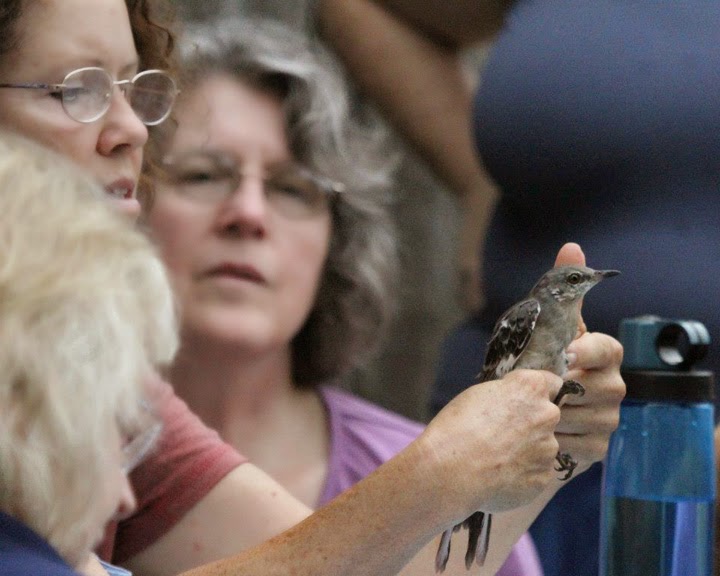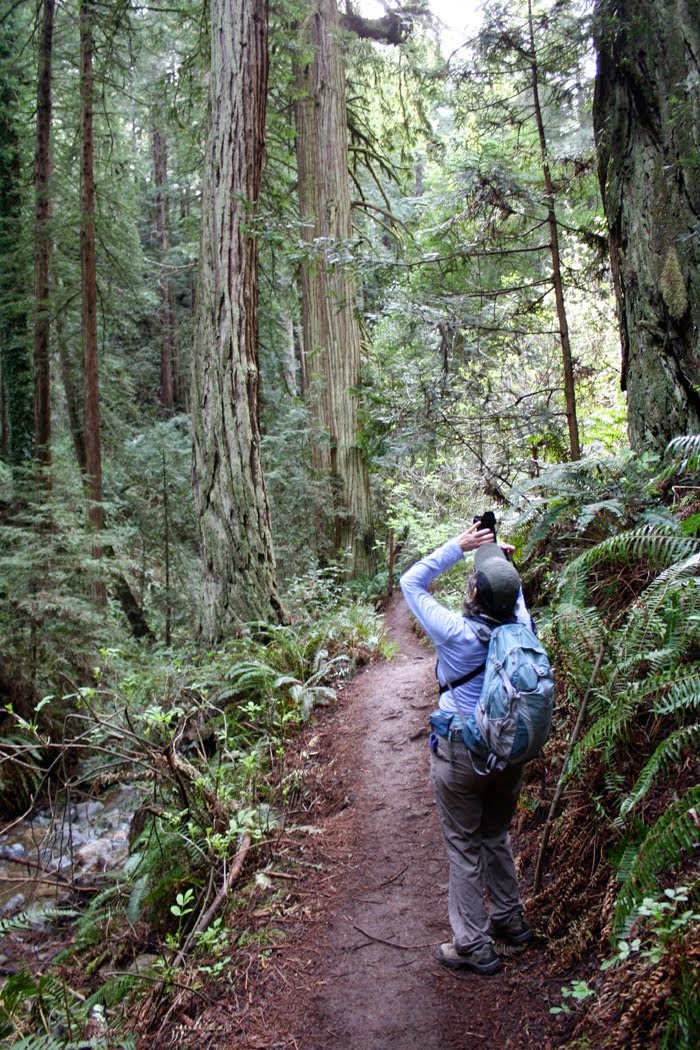Big projects demand a lot of time and everything else is abandoned, I'm afraid. This is why it has taken me so long to post another blog post! I am currently working on a book project that is consuming most of my time. I will tell you more about that soon. In the meantime, I want to show you a project I completed for the Smithsonian National Zoological Park in 2013. It was such an honor to be invited to create art for this project and work with their team of experts!
The park has a new Whooping Crane exhibit. The exhibit enables visitors to see one of the most endangered crane species in the world and one that only lives in North America. The watercolor above is one of four images that depict the story of the Whooping Crane's return to the eastern United States.
Photo: Courtesy of the Smithsonian National Zoological Park
Costume-reared juvenile Whooping Cranes, imprinted on ultralight aircraft and costumed pilots, learn their migration route by flying behind ultralight aircraft during their first fall migration. In the spring, they return on their own without human assistance. In this way, a separate migrating population of Whooping Cranes has been established in the east to help insure that no natural or human-made disaster can cause the loss of this species to the world. The hope is that the re-introduced Whooping Cranes will raise young and increase the eastern population.
I have not seen the exhibit in person, but, look forward to making that happen sometime this year. In the meantime, I'll show you how I approached the paintings for this project.
Above you see the layout of the painting in my sketchbook. White pages are hard to photograph, so I apologize for the poor quality of some of these images. The dimensions of the final banners called for a full sheet of watercolor paper with its width reduced to correspond with the banner's proportions. This made for a tall slender painting 30" x 15" which I taped to a backboard.
I decided to pour the backgrounds for these paintings to take advantange of the translucence and uniformity that can be achieved with this method, as well as, the special qualities of layered colors. Pouring required that I cover any areas I wanted to remain white with a
masking fluid or resist, a rubbery solution that resists the water and pigment. Above and below, I have painted mask on the cranes and the ultralight air craft.
Once the resist dried, I prepared three pigment solutions in laundry detergent cups that I had saved for this purpose. I placed a small amount of pigment in each cup, added the amount of water desired, and mixed with a brush until the pigment was disolved.
When I pour the paint onto wet paper, I am creating a thin layer of color without the aid of a brush. The tilt of the board and the water move the pigment. Mostly, the movement happens without touching the paper, though sometimes the aid of a brush is needed to move pigment that has collected around the edge of the masking fluid. Pigment can also be moved by spraying water in the area desired. Additional water will dilute the pigment and make the value of the color lighter.
I first wet the paper and wait until the paper surface looses its shine. Pigment is then poured on the paper and the flow of pigment controlled with the board's tilt. Both the amount of water added to the pigment and length of time the pigment remains on the paper influence the color's value or how dark or light it becomes. Excess paint is poured off the paper when the desired value is reached, remembering that the paint will dry lighter than it appears when wet.
The pouring above included yellow and rose on wet paper. The paper is still wet in the image. You can see that the colors flowed vertically in the direction of the board's tilt. When more than one color is applied in the same pouring, the colors blend when they meet to create a third color in some areas. More of the rose hue is visible in the image below.
In the image above, I used burnt sienna to define the tree tops. These billowy shapes are sometimes interpreted as clouds. The ultralights can not navigate above clouds, but the entire migration and recovery effort is a magical story, so if the viewer sees clouds, that's okay too!
In the next pouring I used blue to create an atmospheric haze over the tree tops. Water is sprayed over the paper first and lightly spread with a brush. The thin blue mixture is then poured over the paper and encouraged to move with the angle of the board to avoid puddling. I accomplished this while holding the board over the sink to insure that the pigment continues to move. Excess pigment was caught in a paper towel in the sink. And yes, with this size painting, this was a bit awkward. I did wish for a large utility sink!
A closer look at the colors. You can see some of the variation of greens, blues and purple that have been created by the layered colors. I let the paper dry completely and removed the mask with an eraser.
The easiest part for me is adding the detail to the juvenile cranes. The contrast of the white and black on their wings never fails to pop and brighten all the colors around them.
Links and resources:
More about
layering
The
Smithsonian National Zoo
To see more of my Whooping Crane art visit these links:
Whooping Cranes in Watercolor,
Whooping Crane Activity Book, and
Whooping Cranes on gourd art.





























































